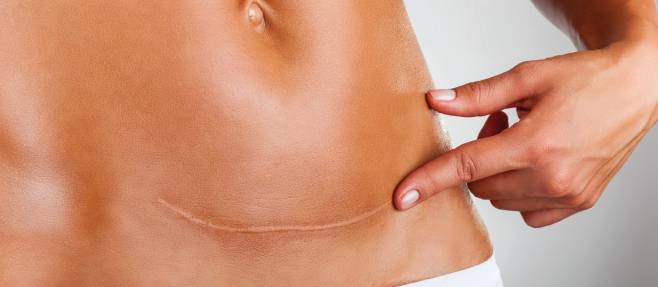Scars Part 1: Hypertrophic and Keloid Scars, Whats The Difference?

With over seventy million skin procedures being performed annually in the United States alone, you or someone you know probably has a scar related to surgery or trauma. Scars are an unavoidable part of life so it is important to know something about how to take care of them.
As a plastic surgeon I always get asked about scars, and what can be done to improve or prevent them. In response to the high level of interest in this topic I have written a series of four articles to better educate our WD patients about scars, and what can be done to manage them and really improve their appearance.
What is a scar?
A scar is made up of fibrous tissue and collagen that replaces normal skin after surgery or injury. It is a natural part of the healing process and is unavoidable after surgery as long as an incision was used during your procedure. Some procedures such as liposuction, involve tiny incisions that are barely noticeable. Others, for example tummy tucks, involve longer incisions. Scars can fade significantly over time, but they will never disappear. Sometimes they don’t fade and can be more noticeable than desired. Most people fall within the ‘normal’ range in regard to their scar-forming ability. This means that the scar response is appropriate given the degree of injury to the area. Some people, in contrast, form hypertrophic or keloid scars after skin injury.
What is a hypertrophic scar?
A hypertrophic scar is a thick and raised scar in which the excess tissue remains within the boundaries of the original injury. These are more common after traumatic injury such as burns, but can certainly occur after a surgical procedure.
What is a keloid scar?
A keloid is a very dense and thick scar that can form in at-risk individuals after injury or surgery. The scar response in these individuals is uncontrolled in the sense that they produce an excessive amount of collagen and fibrous tissue in the area, causing distortion, itching, and sometimes pain. Unlike hypertrophic scars, keloid tissue tends to grow beyond the boundaries of the original scar.
My next article will outline some of the steps that you can actively take before your procedure to optimize your scarring, and what to look for in the early healing period. Read It Here

If one does have a hypertrophic scar, are there any products you recommend to improve the appearance? Are you familiar with Keloid care?
Hi Xha, Keloid Care might help to minimize the appearance of your scar depending on the type of scar and its location. However, we would recommend you seeing a dermatologist to determine if that’s the best course of treatment. Please contact us if you would like to make an appointment!
Superb post, please keep it up!
Very informative and useful information regarding hypertrophic and keloid scar, You have given a good explanation.
Interesting piece, my niece has a large scar on her thigh. I’ll tell my sister to consider bringing her in for you to look at.
I’d like to add that keloids symptoms might include a localized part that is flesh-colored, red or pink in color. A lumpy or ridged zone of skin that’s frequently high. A part that remains to grow bigger with scar tissue over time.